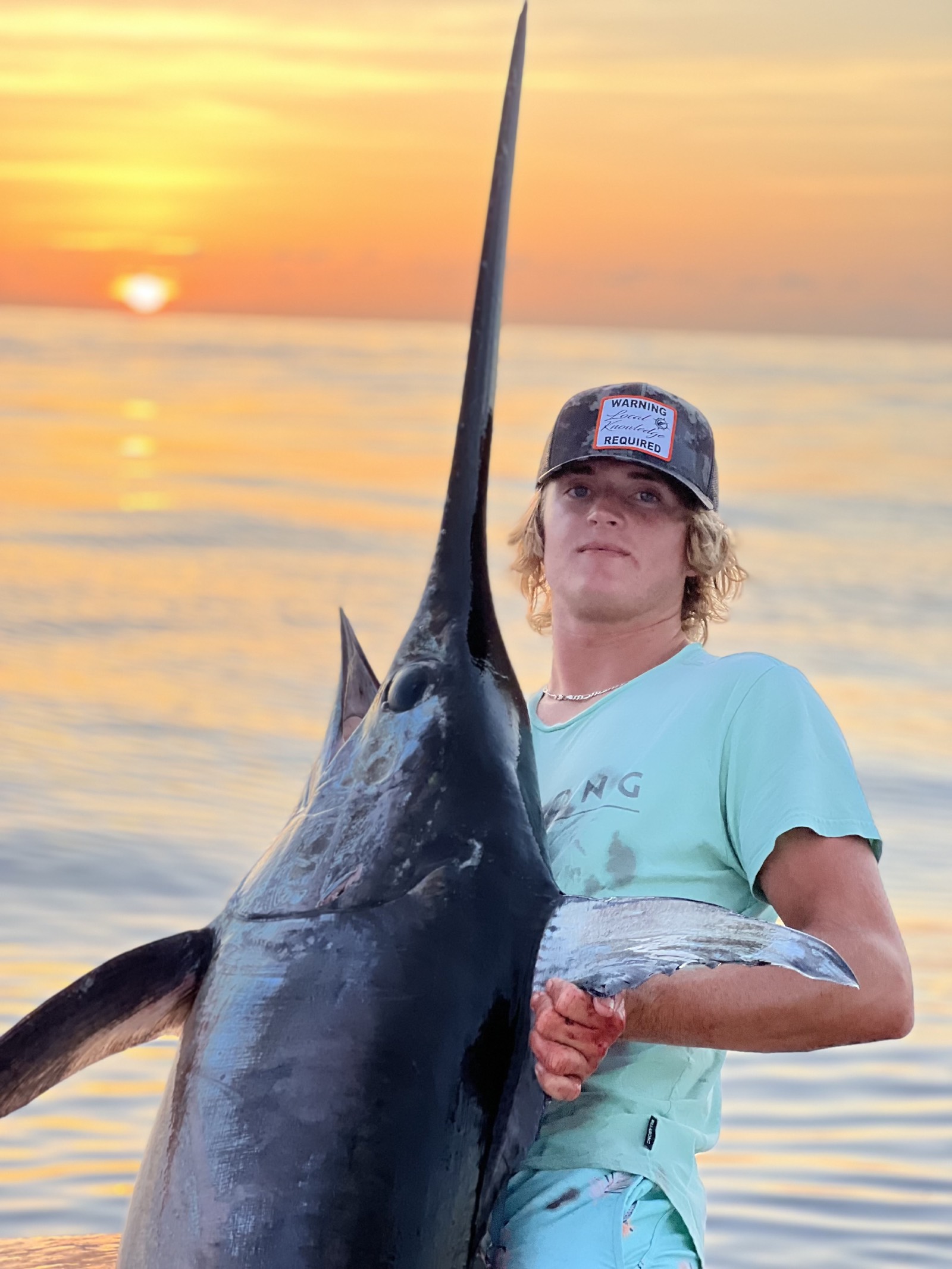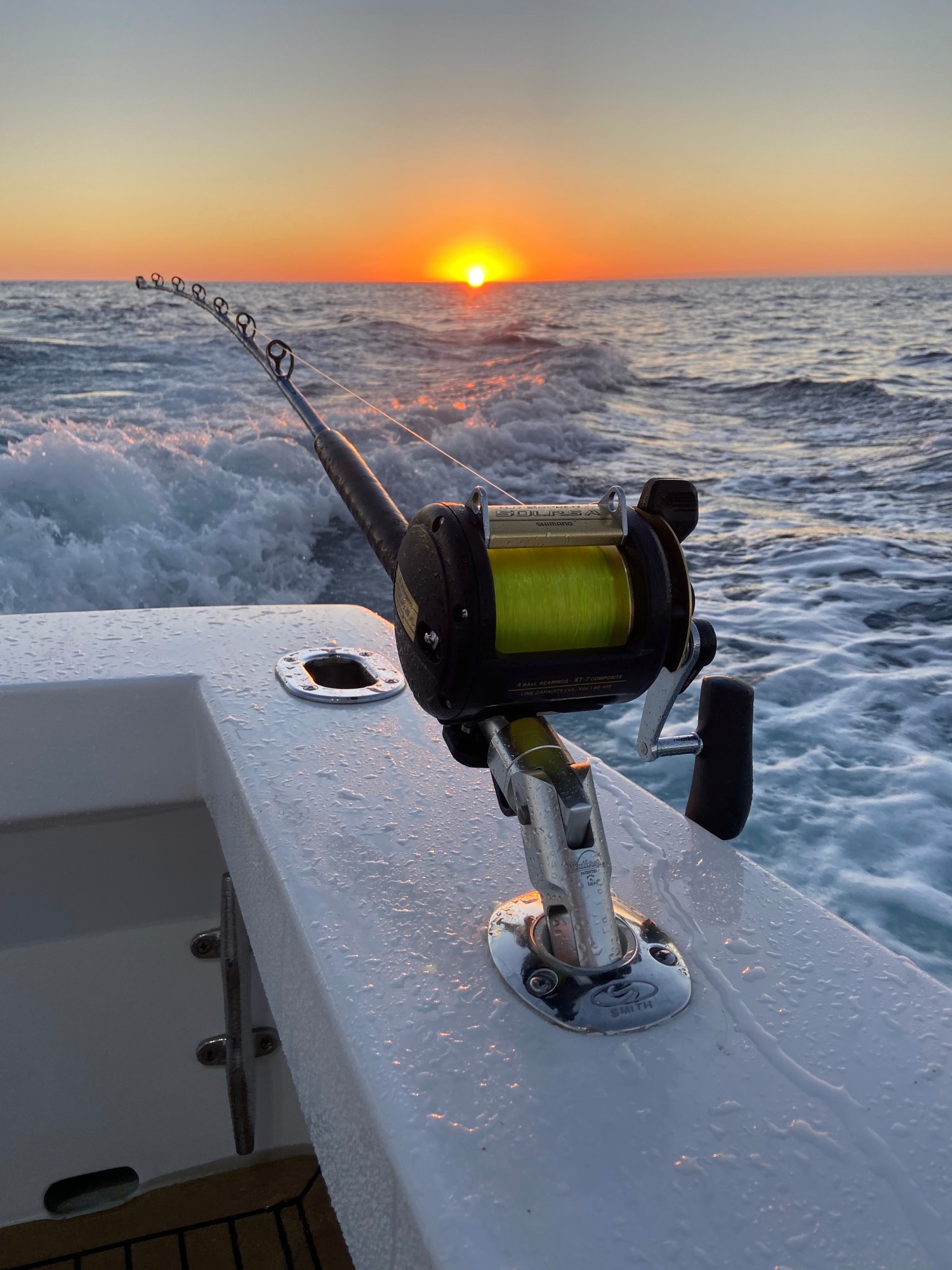Sam White

A Gulf broadbill landed just after sunrise after a two-hour fight.
A quick glance at the radar yielded no targets within 20 nautical miles, not unusual for 4 a.m. and more than 100 miles offshore in the Gulf of Mexico due west of Sarasota, Florida. Two small lighted floats bobbed seductively in the calm seas, with just enough breeze to keep things cool. Then without warning, the float on the long rod laid over horizontally, a surefire indication that some 100 feet below the surface, a bronzed purple swordfish had inhaled our rigged squid and was now headed topside in a rush. The fight was on.
Swordfish's Comeback
A dozen years ago, catching a recreational swordfish in the Gulf of Mexico would have been nearly impossible. The species was heavily overfished by commercial longlining, to the point where efforts to reliably target one were fruitless. But thanks to some sound conservation measures, including the banning of longline fishing in areas of the Florida Straits and elsewhere, this species has made an incredible comeback, especially in the Gulf. Today it’s not only possible but even likely that if you put in the time, you’ll have a few swordfish bites in the dark of the evening. It’s welcome news for anglers in this part of the world, who often spend multiple days and nights at sea while targeting other species such as blue marlin and yellowfin tuna—the runs to the deep water are long, so we tend to make the most of the time and fish at night, too.
Read More: Tripletail Fishing
While many choose to target swordfish using electric reels and deep dropping during the daytime, we prefer to fish for them at night when they venture closer to the surface, which also allows us to catch them in a manner that’s in accordance with IGFA angling rules. It’s also a lot more fun, as these are incredibly tenacious brawlers.
Tackle Set Up for Swordfish
The good news is that the same tackle used for trolling can be easily adapted to swordfishing. We typically use 50-pound-class gear—any lighter and you risk bringing a knife to a gunfight when a deepwater broadbill comes calling. The rig begins with a short Bimini twist connected to 25 feet of 250-pound-test fluorocarbon leader, terminating in a 9/0 to 11/0 J-hook. A series of battery-powered lights are clipped or flossed onto the leader—a larger one at the front and a smaller one about 5 feet from the bait. We also use a breakaway weight setup connected with light monofilament or rigging floss—a hefty chunk of rebar works well for this purpose. Baits vary widely but rigged squid, mahimahi or bonito bellies and live blue runners will all produce swordfish bites. For those who are not comfortable with rigging their own, swordfish baits are readily available through companies like Baitmasters and RJ Boyle which specialize in this kind of fishing. Boyle also carries a full assortment of lights and other necessary accessories.
Picking a Fight

Fifty-pound-class tackle offers a good balance of power and weight for most anglers, especially those fishing stand-up without a fighting chair.
Since this is drift-fishing at its most basic, it’s best to set up in an area where you can slowly drift across productive territory for a long way. Any kind of bottom structure that could hold bait deserves a close examination, but it’s not critical to pinpoint a specific spot. Rather, it’s better to choose a long drift across depth contours and changes that range from 1,800 feet on the deep side up to 500 feet on the shallow edge. Of course, swordfish have tails and can be encountered pretty much anywhere.
We start with one rod fished long and deep, usually about 150 to 200 feet down and 75 or so yards away from the boat. A second rod is fished about 50 feet down and half that distance out. If conditions allow, we’ll fish a third rod just below the surface and closest to the boat, in case a curious fish wanders up to check out the action in our underwater lights which illuminate the sea surface just off the transom.
The float setup is also key. Since swordfish will often continue swimming to the surface after a bite, we use a three-foot length of one-inch PVC with a foam pool noodle zip-tied around it. One Cyalume light stick is attached to the top and another to the bottom, and it’s attached to a section of floss on the mainline using a longline clip. When the bait is deployed, the two lights can be seen one over the other—at the bite, the float will lay over horizontally, giving the angler a good visual cue. Other times, the float just disappears entirely. Either way, it’s game on.
Read More: The Game Changing Circle Hook
Fighting Swordfish
Unlike blue marlin which tend to expend a ton of energy jumping all over the surface, swordfish are dogged brawlers. While they will often jump, they also have the power to dive deeply after a surface display, conserving their energy. A quality harness is a huge asset for anglers fishing from smaller boats without a fighting chair. If you choose to harvest a swordfish, the current NOAA minimum size is 47 inches as measured from the tip of the fish’s lower jaw to the inside fork of the tail; anglers are allowed one per person to a maximum of four per vessel, and a Federal Highly Migratory Species permit is required. Anglers are also required to report swordfish landings to NOAA within 24 hours of returning to port.




























